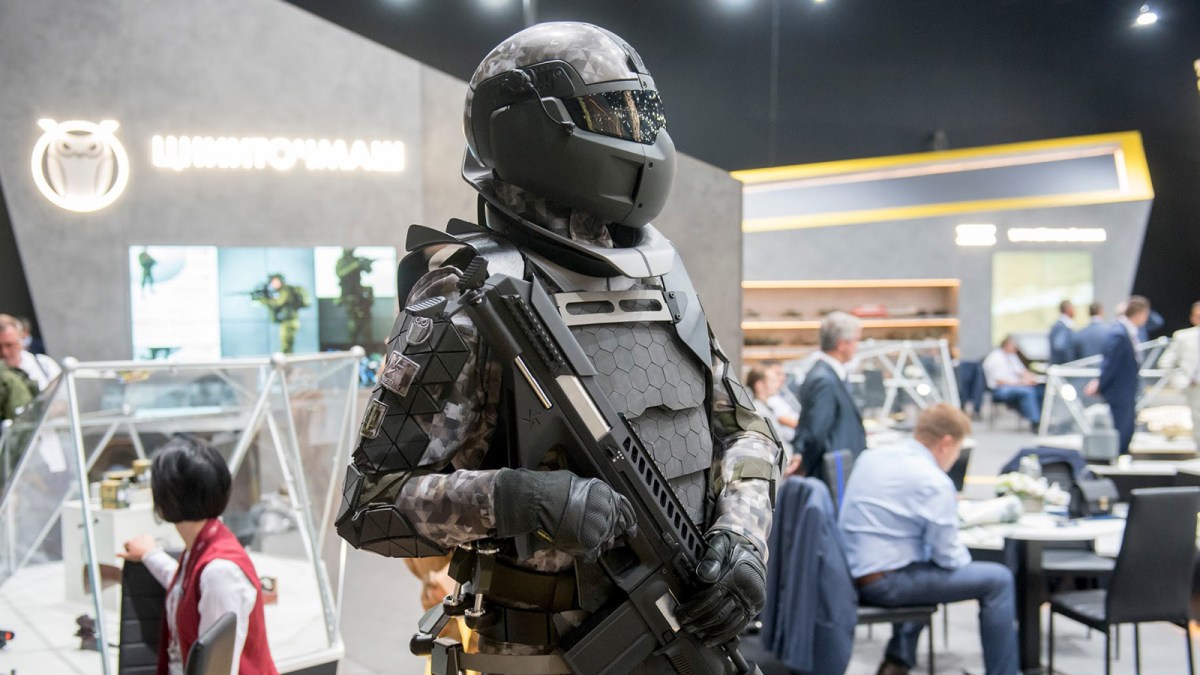

The Russian defense industrial base is purportedly throwing its resources into yet another next-generation super-suit for Russian soldiers to rush into combat with.
State-owned defense giant Rostec announced on Friday that the corporation was leading the charge to develop the fourth generation of its vaunted Sotnik, or ‘Centurion,’ battle armor.
The current third-generation Sotnik suit currently includes the “entirely new personal protective equipment and ammunition, offering light armor defense and increasing the soldier’s armament by several times,” according to the Jamestown Foundation.
“The new generation gear will consist of a fundamentally new set of technology, including the latest achievements of the Russian defense industry, including robotic equipment and integrated systems for exchanging information,” according to Rostec’s Bekkhan Ozdoev. “Today we have started the first stage of development – the definition of tactical and technical requirements.”
While Rostec’s official release was vague regarding the specifics of the new system, Ozdoev had previously stated the fourth-generation Sotnik armor will consist of lightweight polyethylene fiber and armor plating that is engineered to withstand a direct shot from a .50 caliber M2 Browning. “The gear will not restrict movement and will allow you to take the extra weight necessary to perform special missions,” according to Ozdoev.
While the prospect of a futuristic battle suit capable of shrugging off a .50 caliber round seems like something out of science fiction, the Russian military is “totally serious about this,” said Samuel Bendett, a research analyst focused on Russian military developments at the Center for Naval Analyses.
Indeed, the current third-generation Sotnik gear that Rostec is currently developing is itself intended to replace the high-tech Ratnik, or ‘Warrior,’ combat gear — which has been in development for more than a decade and seen combat within the last five years — by sometime in 2025.
The Ratnik suit, which consists of 10 subsystems and 59 individual components, includes modernized body armor designed to withstand 7.62mm rounds, a helmet with a special eye monitor outfitted with a thermal night vision monocular and flashlight, and integrated communication systems. It “also features a self-contained heater, a backpack, an individual water filter, a gas mask, and a medical kit,” according to Army Technology.
More than 300,000 sets of the various iterations of the Ratnik combat gear have already been delivered to the Russian Ministry of Defense in the last eight years, according to the corporation.
While Rosetec isn’t explicitly saying how long research and development will take for the Sotnik combat suit, the company has “a lot to build on” now that two generations of Ratnik battle armor has been combat-tested by Russian forces, Bendett said.
Indeed, the feasibility of the Sotnik is directly related to the success of the Ratnik, according to Bendett, so far that the ‘integrated systems for exchanging information’ element that Ozdoev highlighted “is also not new and will probably build on” existing tactical systems currently in service.
Some futuristic capabilities actually do appear within arm’s reach. Rostec in September unveiled a specialized exoskeleton for the Ratnik battle suit designed to bear 80 kilograms (176 pounds) for the average soldier and a fresh ‘Stormer’ combat exoskeleton designed to haul 60 kilograms (132 pounds) during assault operations.
‘There are certain technologies that will realistically be developed first,” Bendett explained. “Others are just at concept stages.”
When Rostec plans on unveiling a next-generation Sotnik system remains to be seen. What is clear, however, is that the Russian military appears to be beating the pants off of the U.S. when it comes to future infantry combat systems.
Indeed, the Pentagon has been pursuing the dream of a powered exoskeleton for nearly a half-century, with its latest effort, U.S. Special Operations Command’s Tactical Assault Light Operator Suit (TALOS), failing to yield a fully-integrated suit of combat armor following its unveiling in 2019.
Where the U.S. has remained stymied by system integration issues, Russia has benefitted in its exoskeleton development from its ability to field test such gear in its weapons playground of war-torn Syria, as Bendett previously told Task & Purpose.
At the moment, the U.S. military is still playing catching up: The Army is currently in the process of sussing out requirements for a brand-new exoskeleton to help soldiers ruck faster and harder while reducing fatigue. Whether they can catch up to the speed of Russian developments remains to be seen.
Related: The inside story behind the Pentagon’s ill-fated quest for a real-life ‘Iron Man’ suit
